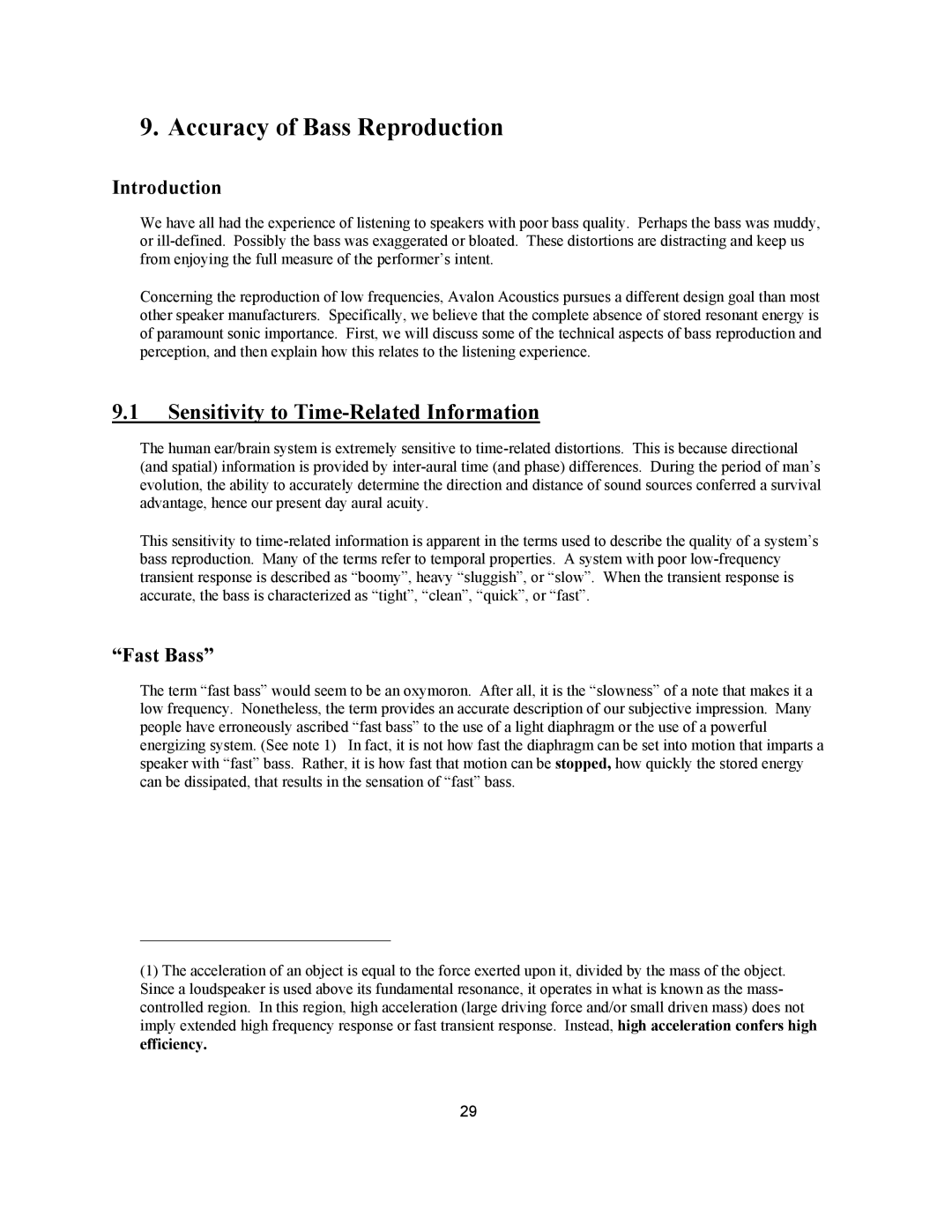9. Accuracy of Bass Reproduction
Introduction
We have all had the experience of listening to speakers with poor bass quality. Perhaps the bass was muddy, or
Concerning the reproduction of low frequencies, Avalon Acoustics pursues a different design goal than most other speaker manufacturers. Specifically, we believe that the complete absence of stored resonant energy is of paramount sonic importance. First, we will discuss some of the technical aspects of bass reproduction and perception, and then explain how this relates to the listening experience.
9.1Sensitivity to Time-Related Information
The human ear/brain system is extremely sensitive to
This sensitivity to
“Fast Bass”
The term “fast bass” would seem to be an oxymoron. After all, it is the “slowness” of a note that makes it a low frequency. Nonetheless, the term provides an accurate description of our subjective impression. Many people have erroneously ascribed “fast bass” to the use of a light diaphragm or the use of a powerful energizing system. (See note 1) In fact, it is not how fast the diaphragm can be set into motion that imparts a speaker with “fast” bass. Rather, it is how fast that motion can be stopped, how quickly the stored energy can be dissipated, that results in the sensation of “fast” bass.
________________________________
(1)The acceleration of an object is equal to the force exerted upon it, divided by the mass of the object. Since a loudspeaker is used above its fundamental resonance, it operates in what is known as the mass- controlled region. In this region, high acceleration (large driving force and/or small driven mass) does not imply extended high frequency response or fast transient response. Instead, high acceleration confers high efficiency.
29
